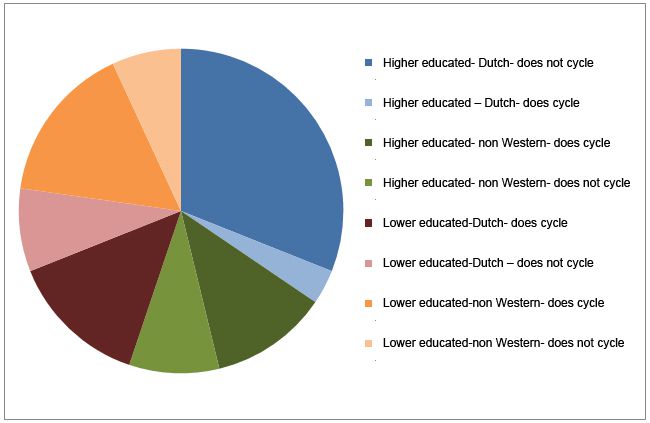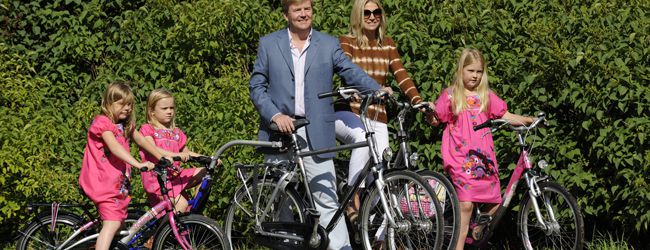In The Netherlands everybody cycles. You would not know how to do it any different.
That’s what sociologist Giselinde Kuipers wrote in her oration: “The bicycle of Her Majesty: About national habitus and social comparison”. She refers to the Dutchman and his bicycle. Cycling has become so common that we have forgotten why we actually cycle. That we are world champion cyclists only becomes apparent when we see newcomers in our society struggle with the bicycle. And if you look closely you’ll find that cycling is not common for every Dutchman. One cycles a lot more than the other.
Previous research already showed there are differences between bicycle use of the native Dutchman and the immigrant. What are these differences, what is the reason for it and can these be reduced by (another) cycling policy? In the context of ‘Does one’s descent affect bicycle use? a master degree thesis in Social Geography, its author Thijs Koolhof researched this.
Koolhof says “I conducted a survey among residents of two districts in which I examined whether higher educated (of non-Western origin) cycle more than lower educated (of non-Western origin).
The first district, Hoograven in Utrecht, was chosen by the Cyclists Association. I selected the second district, Boschveld in ‘s-Hertogenbosch, because it was comparable to Hoograven. These are districts of which the origin of the inhabitants is comparable; where urban issues are apparent and bicycle use is lower than average.
Differences in bicycle use
The answers of the 286 respondents of Boschveld and Hoograven clearly show that respondents of Dutch descent indeed cycle more and over greater distances than non-Western respondents. Two out of three respondents of non-Western origin do not cycle more than 5 kilometres, while only one in three respondents of Dutch descent does not cycle more than five kilometres. More importantly non-Western respondents actually do cycle. Results also show that higher educated people cycle more than lower educated.
In contrast to what is thought of people of non-Western background, the majority of the inhabitants of Hoograven and Boschveld with a non-Western origin do know how to cycle, has a bicycle at his/her disposal and does not have a negative image of the bicycle. However the Dutch do cycle more often and over greater distances. Yet again the non-Western respondent does cycle, only not as often as the Dutch. Cycling is not as common for them as it is for the Dutch.
In order to render the bicycle also common to the Dutch from non-Western origin bicycle related marketing should focus more on the youth rather than the adults because for the latter it is less easy to change behaviour. By introducing the bicycle to young children it becomes a habit for them. Not only for children with a Dutch background but certainly also for children of a non-Western background. In this fashion, cycling becomes so natural they would no longer know different.

Credits picture: Archives Royal Dutch Family
Will William Alexander become a biking king?
While Queen Beatrix did not offer us frequent sights of her on a bike, Willem-Alexander and Maxima have embraced it. Juliana, the upcoming king’s grandmother, used to bike as well, and therefore was very popular.
Six years ago, Herman Pleij professor of Historical Dutch Literature, predicted that William Alexander would be frequently seen riding a bike. “He stands closer to the people and we will often see him riding with his daughters” as per an interview conceded to Vogelvrije Fietser.
The bike as a statement
For more than five generations the bike has been adopted by the Royal Family. Being pictured while riding on a bike is certainly part of a well devised marketing strategy, with which the Royals are saying “we are like you”. The Dutch Royal Family is, after all, another Dutch family.





